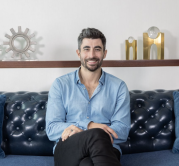5 marketing lessons for credit unions from interviewing 100 CMOs

I’ve been around the marketing block, so to speak…ten years in advertising agencies, five as a CMO (including in fintech at 11:FS), and now leading Rival, a boutique marketing consultancy for challenger brands. I’ve had the privilege and pleasure of interviewing over 100 other CMOs between the two podcasts I’ve hosted: the Fintech Marketing Podcast by 11:FS and Scratch CMO interviews by Rival. These conversations have given me a glimpse into the mindsets and models used to build some of the biggest brands and fastest-growing businesses.
Here are the five biggest lessons I’ve learned from interviewing all these amazing CMOs, executives, and entrepreneurs.
- Have a relentless focus on the customer.
All growth ultimately comes from delivering differentiated value to the customer that starts with having a deep understanding of their needs. The role of marketing within an organization isn’t just to bring the product to the customer, but to bring the customer to the product. Put another way: good marketers should make the companies they work for more customer-centric. Almost every CMO I’ve interviewed has, in their own way, talked about how they put a focus on the customer as their North Star. Some, like John Sheldon of Smile Direct, makes everyone in his team take rotations in customer service. Whereas others, like Martin Lindstrom (who isn’t a CMO himself but advises the CMOs of many of the biggest brands in the world), talks about how every breakthrough product or marketing idea he’s been a part of comes from an insight about the customer’s needs that competitors haven’t figured out yet. The customer can’t give you every answer, but if you focus on them and their needs you won’t go wrong. Make sure your CMO and marketing function has a clear mandate to focus on bringing that understanding of the customer’s needs (not just stats and demographics) into the business.
- Focus on your point of difference.
So many businesses, especially in the world of banking, focus on the product with their marketing: why it’s great, what it does, what special offer you’ll get if you sign-up now. The CMOs I interviewed stressed the importance of focusing on what makes you and your product different, not just what makes it great. Unless you plan to compete and win on price only, your marketing has a job to do to make your brand and product differentiated in order to make it preferred over others. Chris Pitt, the CEO of First Direct in the UK (but a former marketer) talked about the early days of “internet” banking in the UK and how important it was that First Direct had a clear point of difference in the market (excellent customer service). And Mark Kirkham, the CMO of international beverages at PepsiCo, shared how some of the most successful brands in their portfolio are challenger brands that have grown by taking the same commoditized product (water, soda, etc), but wrapping it in a sharp, distinct new brand. Your point of difference isn’t why your product is great, it’s what makes your product better than others. It’s a slight change to your perspective that will have a big impact in the market.
- Develop a framework for innovation.
This is one of my favorites because it led to so many of the most exciting conversations in these 100+ interviews. Innovation is hard – especially when you’re an established, at scale (and regulated) business. But there is a proven way to make it happen over time, at least in the marketing function: develop a framework to institutionalize it. What this means is essentially making sure that there is time, money, and focus put aside to come up with ideas and initiatives that aren’t about delivering short-term, proven returns. The framework I heard most frequently was some version of a 70/20/10 framework, which when applied to marketing says that 70% of time/money should go to tried and true investments that you know will deliver return; 20% should go to new and next that you think will work in the future; and 10% should go to unproven but big potential ideas that might not work, but if they do they’ll deliver outsized return. Soyoung Kang, CMO at Eos, uses this framework to deliver viral hit after viral hit from her 10% budget with her beauty CPG brand. But on the other end of the business spectrum, Linda Boff at GE sees taking risk as critical to maintaining relevance as a “130-year-old start-up”. The answer for how to define and allocate this budget will be different for every business, but the question to ask yourself is “how do we develop a framework to ensure we are taking (the right risks) to innovate on a regular basis?”.
- Move fast on the things that matter.
Speed is always a tricky subject within financial institutions. When you’re a regulated business that deals with people’s money and livelihood, you can’t afford to move fast if that puts you or your customers at risk. On the other hand, moving fast on the things that matter in the right way is a huge advantage to businesses, especially on the marketing front when the media and cultural landscape moves so quickly. When sharing case studies of successful marketing campaigns, so many of the CMOs I interviewed highlighted the importance of moving fast once they had the right idea and knew how to executive it. Aron North, CMO of Mint Mobile (part-owned by actor Ryan Reynolds) talked about their position as a challenger telco brand and stripping down the process for producing new “ads” (often they’re just simple videos that the in-house team shoots and edits) to get new offers and updates to the market. Henry Chilcott, CMO of Formula E, shared how he focuses on fully prepping and planning the team ahead of races to ensure they can move and adapt to opportunities on the ground to capture more content. Speed for the sake of speed is not a good thing, but speed that doesn’t add risk and helps you do creative, interesting things faster than your competition is a huge advantage.
- Balance the art with the science.
Good marketing is a blend of art and science, creativity and data. We all, as individuals, and as organizations overall, have our own balance between the two. However, what’s clear to me after all these interviews is that the best brands and most successful CMOs over-index on the science. They don’t ignore the role of art and creativity, but they tend to value, invest in, and prioritize making sure they and their team are set up to be incredibly data-driven in everything they do. Gil Efrati, CMO of Resident Home, one of the fastest growing e-commerce businesses in North America, shared how his team has built proprietary data analysis tools that allows them to know exactly how much return they will get back from every dollar of marketing investment they make. As a result, they actually don’t have a marketing budget, but instead an ROI threshold above which they can invest as much as they want. Charlotte Langley, Chief Customer Officer of Bloom & Wild, a DTC flower delivery company in the UK that’s raised almost $200M in funding, shared how her team includes three full-time researchers who are constantly running customer surveys to find opportunities for new products (like cheaper bouquets when the inflation started to tick up) to breakthrough marketing campaigns (not selling red roses on Valentine’s Day because people found them too cliche). All science isn’t the answer. All art isn’t the answer. Again, it’s about a balance and blend. But in my experience most businesses, especially in the world of banking, have a lot more opportunity to bring more data into their marketing to deliver more effective and efficient campaigns.
So, there you have it! Hopefully there’s something in there that you can take back and either discuss with your marketing team if you’re not in marketing, or start applying directly if you are. And while I know that most of the examples don’t come from the world of credit unions, they still speak to core principles and practices that can be applied to your category, customers, and campaigns. And, not for nothing, sometimes taking a fresh, different perspective on things can help solve old problems in new ways.
If you want to check out the rest of the 100+ interviews, please do check out Scratch CMO Interviews and the Fintech Marketing Podcast. And if you want to connect with me directly, find me on LinkedIn or email me directly eric@wearerival.com. Thanks for reading!





